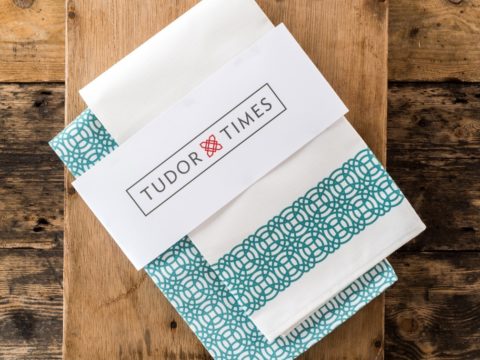Bess of Hardwick: Life Story
Chapter 8 : Royal Wrath
The two countesses were immediately summoned to London. Lady Lennox, together with her son and new daughter-in-law, were put under house arrest at the Lennox house in Hackney, before Lady Lennox was conveyed to the Tower for the third time in her life. There is no evidence for Bess being sent to join her.
The Earl of Huntingdon was deputed to investigate the matter. Although Durant describes Huntingdon as ‘impartial’, and not a friend to any of the parties, he was probably warmly disposed towards Bess. His wife, Lady Katherine Dudley, was the daughter of the late Duke of Northumberland, and had been part of the circle surrounding the Greys in the 1540s and 1550s, amongst whom Bess and William Cavendish had found their friends.
Shrewsbury wrote several letters to Burghley, attempting to exonerate himself from any suspicion – even suggesting a marriage with Burghley’s daughter for his last unmarried son. Burghley, never one to take risks, declined. He warned Shrewsbury that Elizabeth was beginning to suspect that he was too attached to Mary, and he himself had thought so when he had joined the bathing expedition at Buxton.
Elizabeth was so sensitive that when Shrewsbury wrote that his son Gilbert and Mary had had their first child, he received a reprimand from Elizabeth. No strangers should have been admitted to Sheffield Castle whilst Mary was there. Shrewsbury was obliged to write back that only a midwife had been allowed in. The baby had been christened by him with his other children.
The Lennox marriage, whatever its motivation, proved fruitful. In November 1575, a daughter, named Arbella, was born. This was yet another thorn in Elizabeth’s side. Whilst many objected to Mary Queen of Scots as heir on account of her religion, and her nationality, Arbella Stuart was born in the realm, was the great-great grand-daughter of Henry VII, and would undoubtedly be brought up as a Protestant. If she had been a boy, she might well have been preferred to her cousin, James VI of Scotland.
In due course, Elizabeth recovered her temper and permitted Lady Lennox to leave the Tower and Bess to once again frequent the company of Queen Mary, seemingly accepting that the two countesses had not been masterminding a plot to displace her. Whilst Bess’ gamble on Elizabeth Cavendish’s marriage had partially paid off, the young Countess of Lennox was soon widowed when Charles died in 1577.
Queen Mary had confirmed his place in the Scottish succession, and had also signified her wish that Elizabeth Lennox be paid dower from the Lennox lands in Scotland, with Arbella to inherit the earldom. The Scots government entirely ignored Mary’s wishes – which probably did not surprise Bess. She paid a visit to Queen Elizabeth, who was glad to see her, and wrote a letter in favour of Arbella’s rights to the Regent Morton, however it was of no more use than Mary’s letter had been – the Lennox title was bestowed on Arbella’s elderly great-uncle.
It is unlikely Elizabeth had been enthusiastic in her pleas. An heir on her doorstep with land and income of her own, not dependent on Elizabeth or her English family, would have been destabilising for the Queen. Bess and Lady Lennox, however, continued to treat the little girl as though she were a countess.
Because Elizabeth Cavendish had married without her step-father’s consent, he refused to pay her dowry. She and her daughter were thus dependent on Lady Lennox, the majority of whose estates had been confiscated by the Crown. In 1575, Leicester stayed with Bess at Chatsworth, after taking the waters at Buxton. He agreed to ask Elizabeth for maintenance for Arbella, presumably out of the English Lennox lands, which was eventually granted.
Elizabeth (Bess) Hardwick
Family Tree




